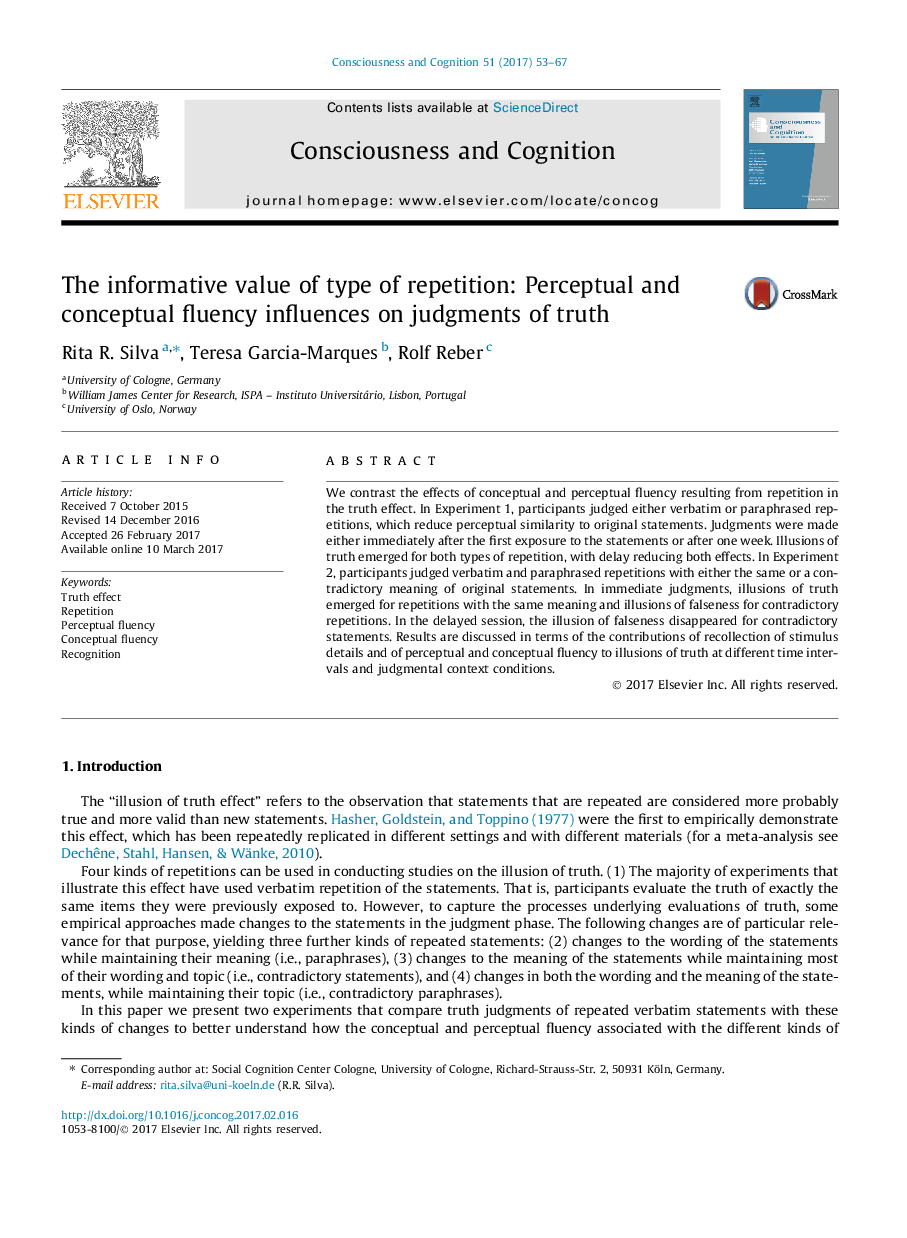| Article ID | Journal | Published Year | Pages | File Type |
|---|---|---|---|---|
| 5041835 | Consciousness and Cognition | 2017 | 15 Pages |
•We address conceptual and perceptual fluency contributions to illusions of truth.•Ps rated repetitions (R), paraphrases (P) and contradictions (C) of old statements.•Illusions of truth emerged for R and P and illusions of falseness emerged for C.•After one week, truth effects were reduced and illusions of falseness tended to reverse.•Memory and the context in which truth judgments are made moderate fluency effects.
We contrast the effects of conceptual and perceptual fluency resulting from repetition in the truth effect. In Experiment 1, participants judged either verbatim or paraphrased repetitions, which reduce perceptual similarity to original statements. Judgments were made either immediately after the first exposure to the statements or after one week. Illusions of truth emerged for both types of repetition, with delay reducing both effects. In Experiment 2, participants judged verbatim and paraphrased repetitions with either the same or a contradictory meaning of original statements. In immediate judgments, illusions of truth emerged for repetitions with the same meaning and illusions of falseness for contradictory repetitions. In the delayed session, the illusion of falseness disappeared for contradictory statements. Results are discussed in terms of the contributions of recollection of stimulus details and of perceptual and conceptual fluency to illusions of truth at different time intervals and judgmental context conditions.
